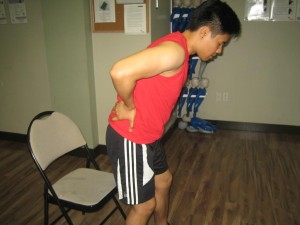The sacrum is best described as a triangle-shaped bone situated at the base of the spine which houses the sacral plexus. The sacral plexus is a group of nerves that are responsible for innervating the lower body. It is important to note that the sciatic nerve is part of this group. A pinched nerve in the sacrum can affect the buttocks, pelvis, low back, legs and the feet. There are first aid and treatment options that can be done at home to help alleviate the pain and discomfort.
Diagnosing a pinched nerve in the sacrum
Based on studies conducted, it is still best to be diagnosed by a doctor if a pinched nerve in the sacrum is suspected. In doing so, an accurate diagnosis can be made before home treatments at home can be performed. Take note that some cases of nerve compression can be linked with benign tumors. With this in mind, proper assessment by the doctor can help determine the exact cause while the suitable treatment options are provided.
Treatments for a pinched nerve in the sacrum
The following treatment measures can be used to help relieve the discomfort experienced by the individual caused by the pinched nerve in the sacrum.
Rest
If an individual has been diagnosed with a pinched nerve in the sacrum, he/she must be given enough time to rest. The ideal way to relieve the pressure on the sacral nerves is to instruct the individual to stop activities that aggravate the pain and take regular breaks if certain activities could not be avoided.

Encourage the individual to lie down on his/her back and elevate the legs by propping pillows beneath the knees. This will help maintain a position in which the nerves will not get irritated.
Stretching
There are certain stretching routines that can help take the pressure off the compressed nerves. The individual must be encouraged to stretch the lower back, hip flexors, buttocks and hamstrings.
Using hot and cold therapy
Always remember that using cold therapy can drastically minimize the swelling while heat therapy will promote improved circulation. In most cases, cold is suitable for recent injuries while heat is commonly used for chronic problems. You can initially use ice first by using an ice pack for about 20 minutes and then apply heat to the affected area. You can also alternate between the two if this can help alleviate the symptoms experienced by the individual. Just make sure that if an ice pack is used, it must be wrapped in a clean towel or cloth before applied on the skin.
What is magnetic therapy?
Magnetic therapy has been considered as an effective treatment for pain control while at the same time stimulating the natural healing ability of the body. Based on studies conducted, magnets can help relieve the pain by minimizing the swelling. Today, you can easily purchase magnets or magnetic bracelets that can be used by the individual at home.
